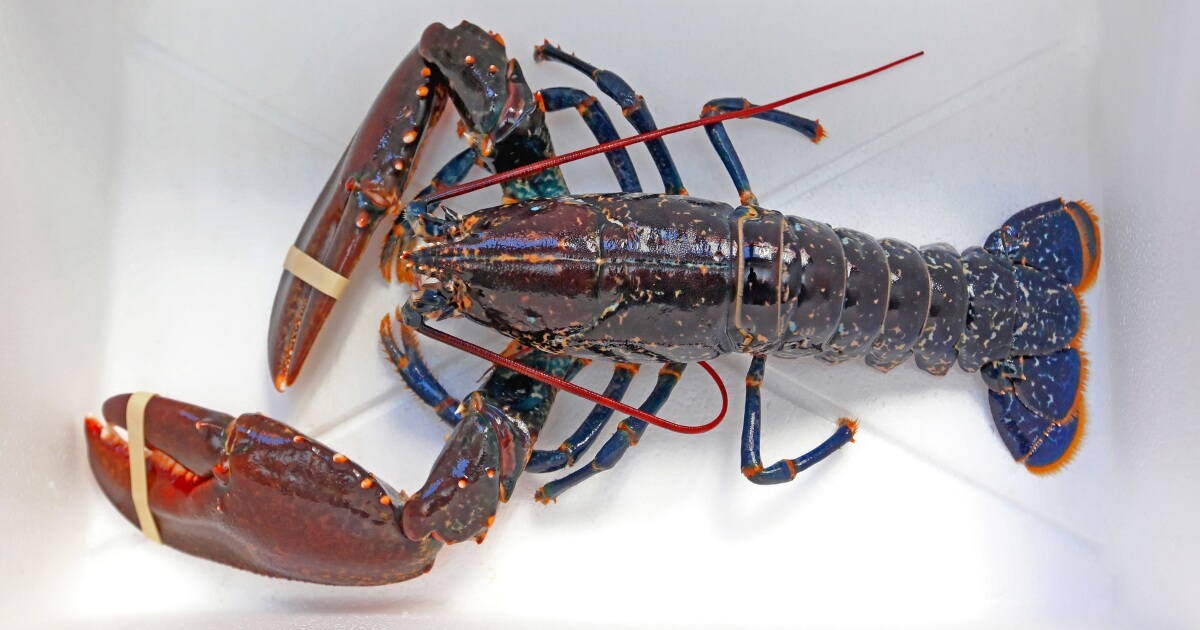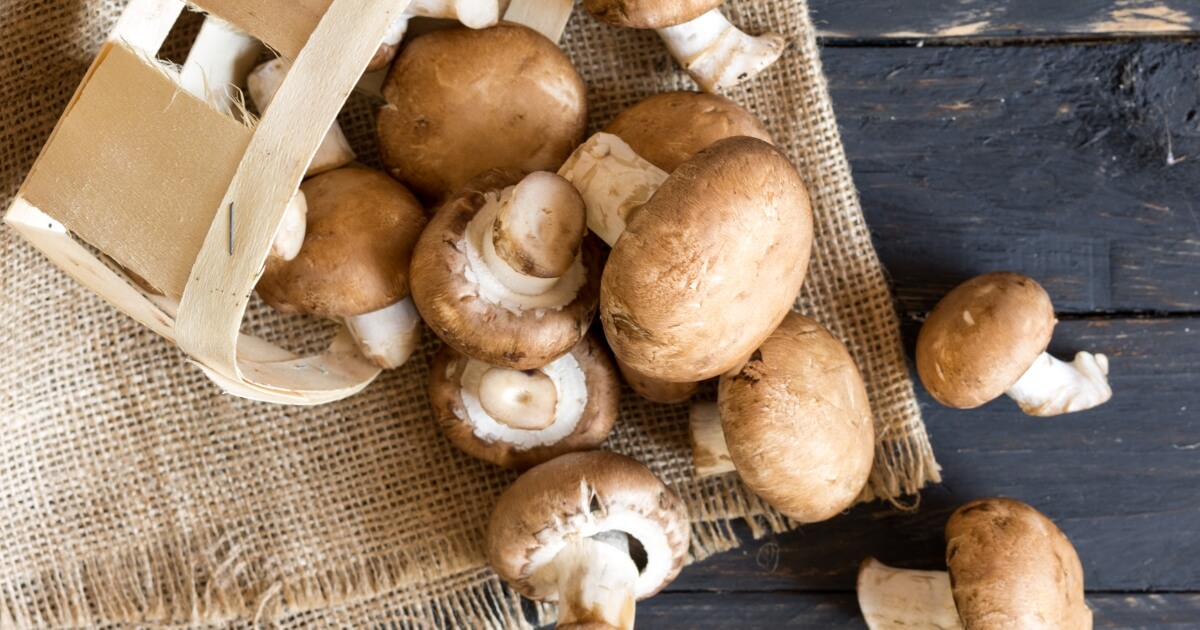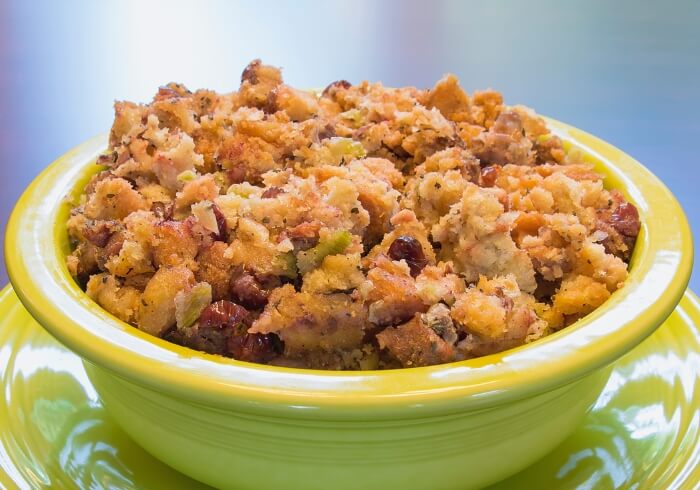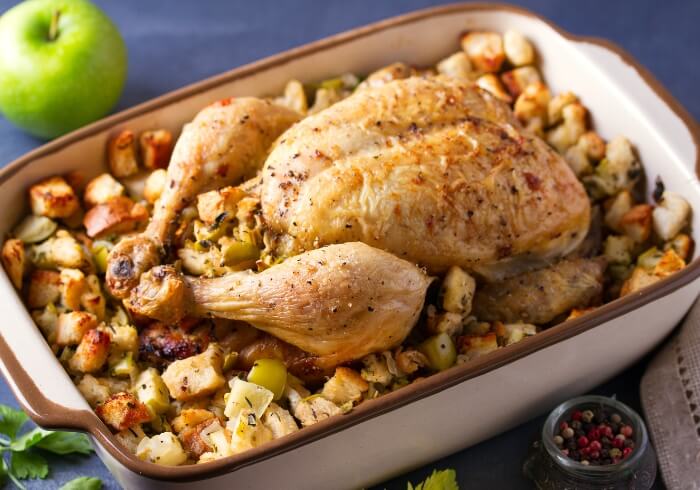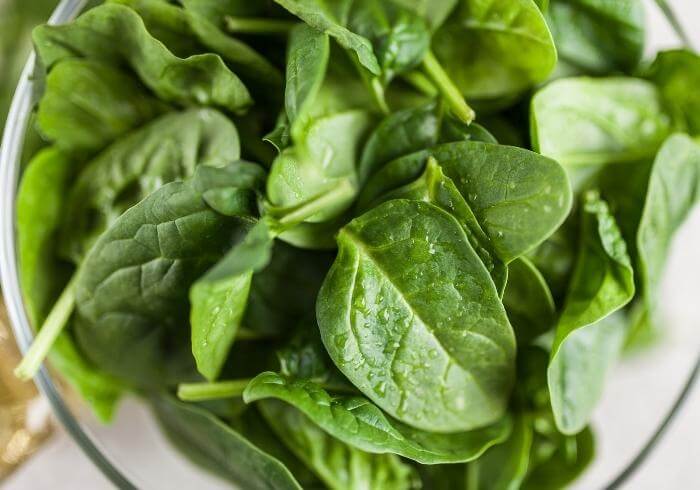Whoa, you’ve got a mountain of potatoes and not enough dinners planned? No sweat! Freezing potatoes is a brilliant move to extend their shelf life and say goodbye to food waste.
But hold up, it’s not as simple as chucking them in the freezer. There’s a right way to do it to keep their texture and taste spot-on.
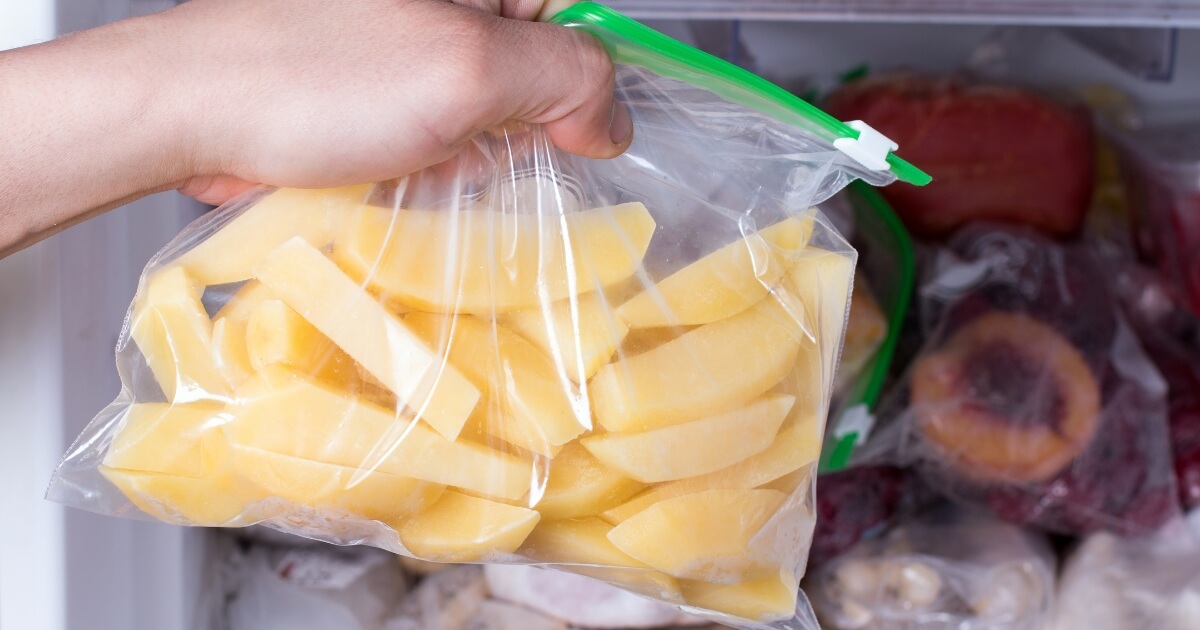
You can freeze potatoes by blanching them first, then cooling, drying, and flash freezing to make sure they retain a desirable texture and flavor for up to 3 months. However, you should avoid freezing raw or fully cooked potatoes, which can make them mushy and grainy after thawing.
In this guide, we’re getting into the nitty-gritty of freezing potatoes. From prep to thawing, I’ll help you to make sure that your potatoes are as fabulous coming out of the freezer as they were going in.
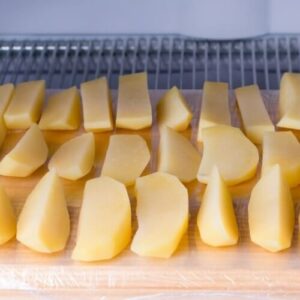
Quick Guide: How To Freeze Potatoes
Equipment
- 1 4-Quart Pot (for boiling)
- 1 Large Bowl (for ice bath)
- 1 Baking Sheet (for flash freezing)
- 1 Parchment Paper (to line baking sheet)
- 1 Vegetable Peeler or Knife (for peeling)
- 1 Slotted Spoon (for transferring potatoes)
- 10 Paper Towels (for drying)
- 5 Freezer Bags (for storage)
- 1 Permanent Marker (for labeling)
Ingredients
- 8 whole Fresh Potatoes (Russets or Gold Potatoes recommended)
- 2 trays Ice (for ice bath)
- 1 tbsp Salt (optional for boiling water)
Instructions
- Choose firm potatoes without soft spots or sprouting eyes. Russet and gold potatoesare great choices.
- Clean your potatoes thoroughly. Peeling is optional but recommended for a smoothertexture.
- Cut potatoes into 1-inch chunks or your desired shape for uniform cooking andfreezing.
- Blanch potato pieces in a 4-quart pot of boiling, unsalted water for 3-5 minutes. This step is crucial to halt enzyme activity that causes spoilage.
- Immediately transfer the blanched potatoes into a bowl of ice water which will stop the cooking process.
- After cooling, drain and pat the potatoes dry with a paper towel in order to remove excess water.
- Arrange the potato pieces on a parchment-lined baking sheet, ensuring they're laid out in a single layer.
- Transfer the frozen pieces into airtight storage bags. Remove as much air as possible from the bag to prevent freezer burn.
- Mark the bags with the date. Frozen potatoes can last up to 3 months for optimal quality.
Selecting & Preparing Potatoes
Picking the Perfect Potato: Alright, let’s talk potato selection. You want to start with the cream of the crop – think fresh, firm potatoes.
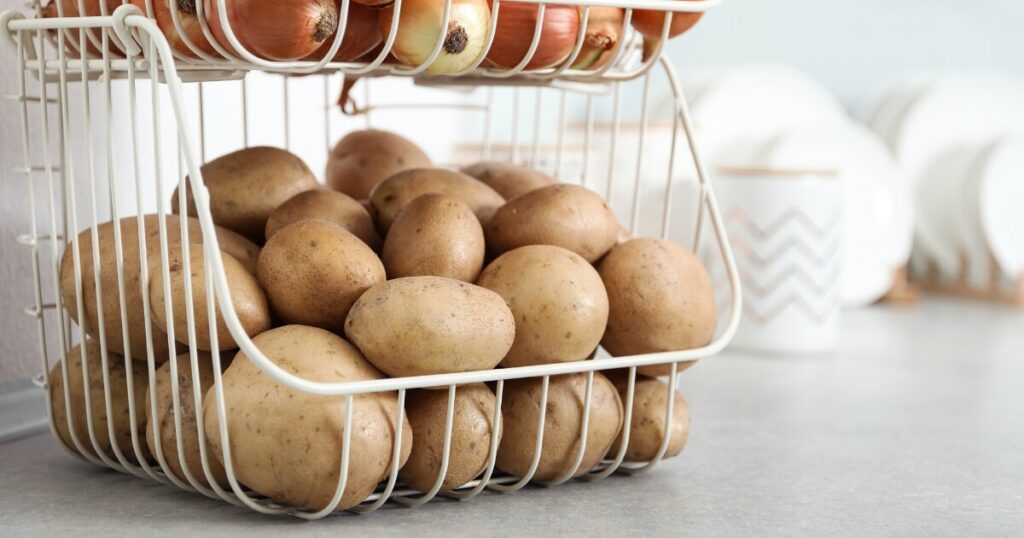
Russets and gold potatoes are your go-to buddies here. They freeze like a dream thanks to their texture and moisture content.
But watch out for the no-nos: soft spots, sprouting eyes, or green skin. These guys can throw off the flavor and aren’t great for safety. You can find more about how long potatoes last and things to watch out for here.
The Cleaning Game: Let’s get those spuds squeaky clean. Give them a good scrub under cold water to kick off any dirt.
To Peel or Not to Peel: Here’s where you get to choose your own adventure. Peeling is totally optional but a big yes for dishes where you want smoothness, like in your mashed potatoes or gratins.
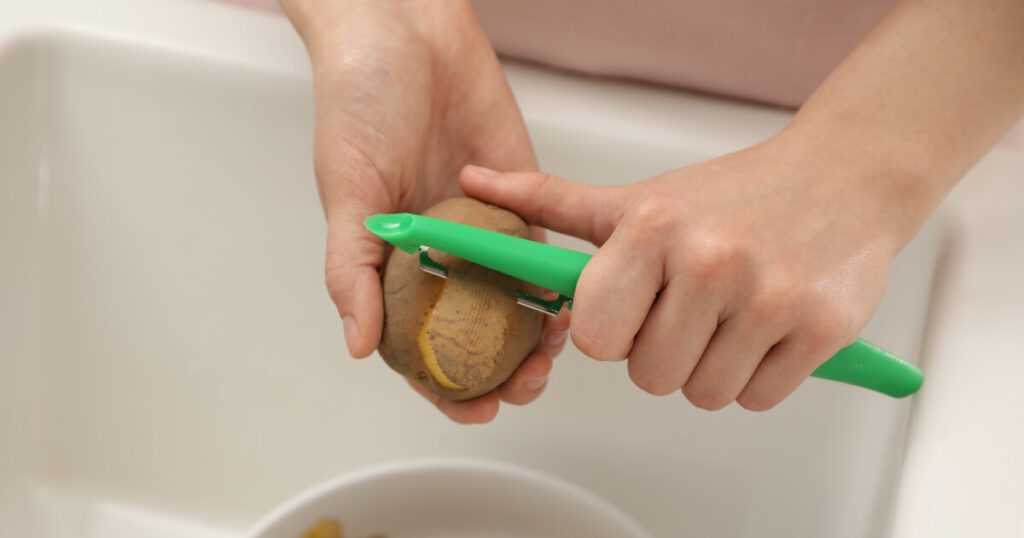
If you’re reaching for that peeler, be thorough and get rid of any blemishes or eyes. But hey, if you’re whipping up something like a rustic potato salad, let that skin shine! It adds flavor and texture that’s just too good to waste.
Blanching Potatoes
Blanching potatoes before freezing? This quick plunge into boiling water is like hitting the pause button on enzymes that lead to spoilage and texture loss. It’s the secret sauce to keeping your potatoes colorful, tasty, and nutritious, even after hanging out in the freezer for months.
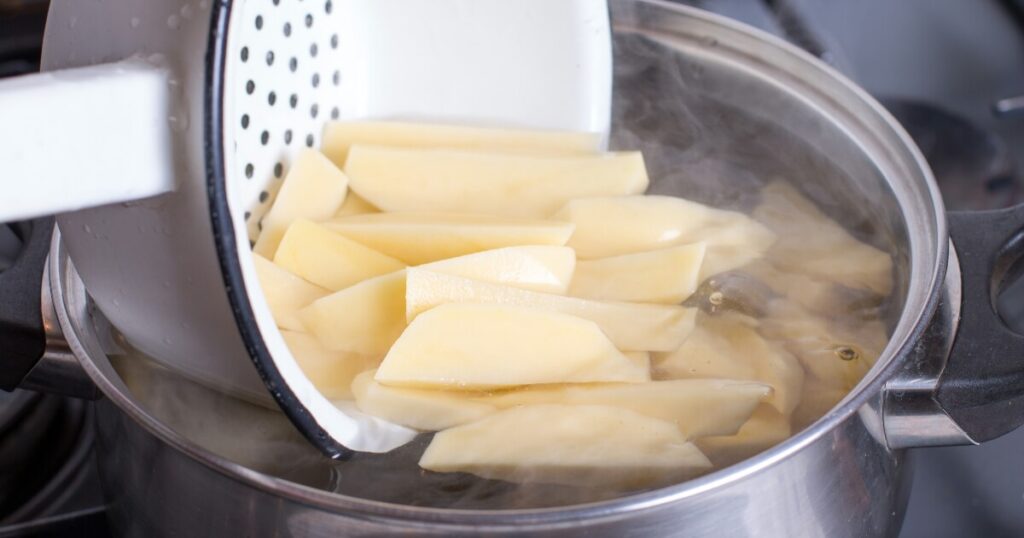
Here’s how to blanch potatoes:
- Boil Water: Kick things off by filling a 4-quart pot with water and cranking up the heat until it’s boiling like crazy. A pinch of salt? Your call, but it’s not a deal-breaker.
- Ice Bath Prep: While your pot’s doing its thing, get an ice bath ready. Just a deep bowl of iced water waiting to give those spuds a quick chill.
- Blanching Time: Water’s boiling? Great! Toss in your potato pieces, but hey, no overcrowding. Give them space! Blanch those babies for 3-5 minutes. Smaller chunks, like 1-inch pieces? They’re quick, just 3 minutes. Bigger chunks or whole potatoes might need the full 5.
- Cooling Off: Post-blanch, it’s ice bath time. Scoop your potatoes out and plunge them into the icy spa. This halts the cooking and keeps them firm and fabulous.
- Drain and Dry: After their chill session, drain those potatoes and pat them dry. You want to get rid of as much water as possible to dodge those pesky ice crystals in the freezer.
Flash Freezing Potatoes
Flash freezing is where you make sure your potatoes don’t turn into a potato iceberg. Spread your blanched, cooled potato pieces on a parchment-lined baking sheet. Keep them distanced in a single layer, not touching.
This step is key for avoiding a big frozen potato lump, making it a breeze to grab just what you need later. Place your baking sheet into the freezer until the potatoes are solid, usually about an hour.
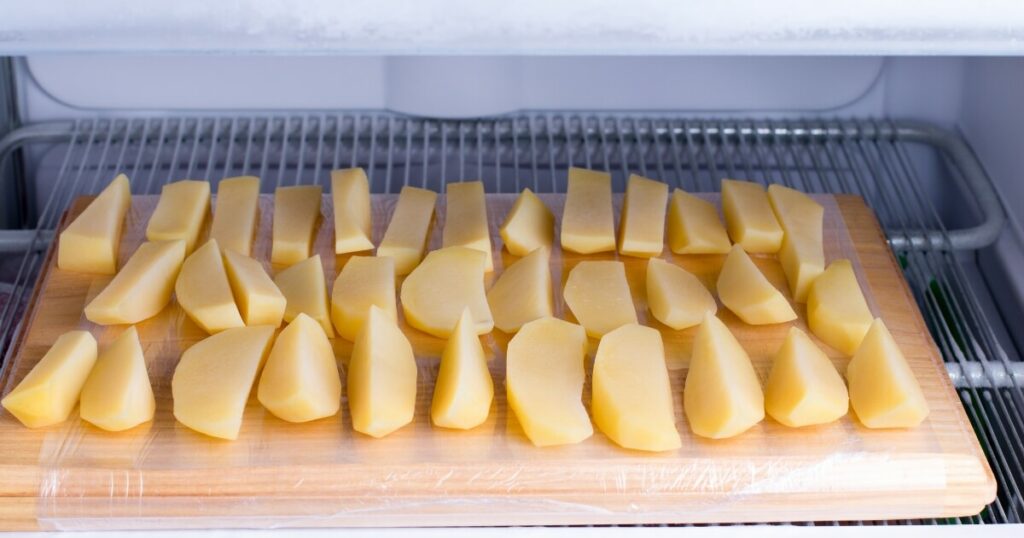
For the long haul, it’s time to bag ’em up. Transfer your frozen potato pieces into freezer bags. Get as much air out as you can before sealing to keep freezer burn at bay. Don’t forget to mark the bags with the freeze date, your personal expiration date.
These potatoes should be good for up to 3 months when stored right. But again, it’s important to get rid of as much air as possible for top-notch quality and flavor later on.
Using Frozen Potatoes
Thawing your frozen potatoes is also a big deal if you want them to keep their texture and flavor. The gold standard? Thaw them overnight in the fridge.
This slow and steady method helps keep their structure in check, which is super important for dishes where texture is king, like those crispy roasted potatoes or creamy scalloped potatoes.

The microwave can come to the rescue in a pinch, but tread lightly – it’s a fine line between thawed and mushy.
Now, let’s talk versatility. Toss them straight into soups or stews, and they’ll all thaw and cook!
Planning on mashed potatoes or potato gratins? Give them a thaw first to make sure they cook evenly. Got small frozen potato chunks? They’re perfect for whipping up a quick hash or throwing into a breakfast scramble.
And let’s not forget the classic baked potato – jazz up thawed halves with cheese, sour cream, and chives and pop into the toaster oven for a meal that’s both speedy and scrumptious.
Potato Freezing FAQs
Can You Freeze Potatoes With Skin On?
Absolutely, you can freeze whole potatoes with their skin on. Just remember, the texture might change a bit, and the skins may fall off when thawed and reheated.
Can You Freeze Potatoes Without Blanching?
Technically, you can blanch potatoes without freezing, but it’s not ideal. Skipping the blanching step often leads to discolored and mushy potatoes after thawing.
Can You Freeze Cooked Or Fried Potatoes?
Freezing cooked or fried potatoes can be tricky. While it’s possible, be prepared for a texture change upon thawing, as they can become soft, lose their crispness, or become grainy.

